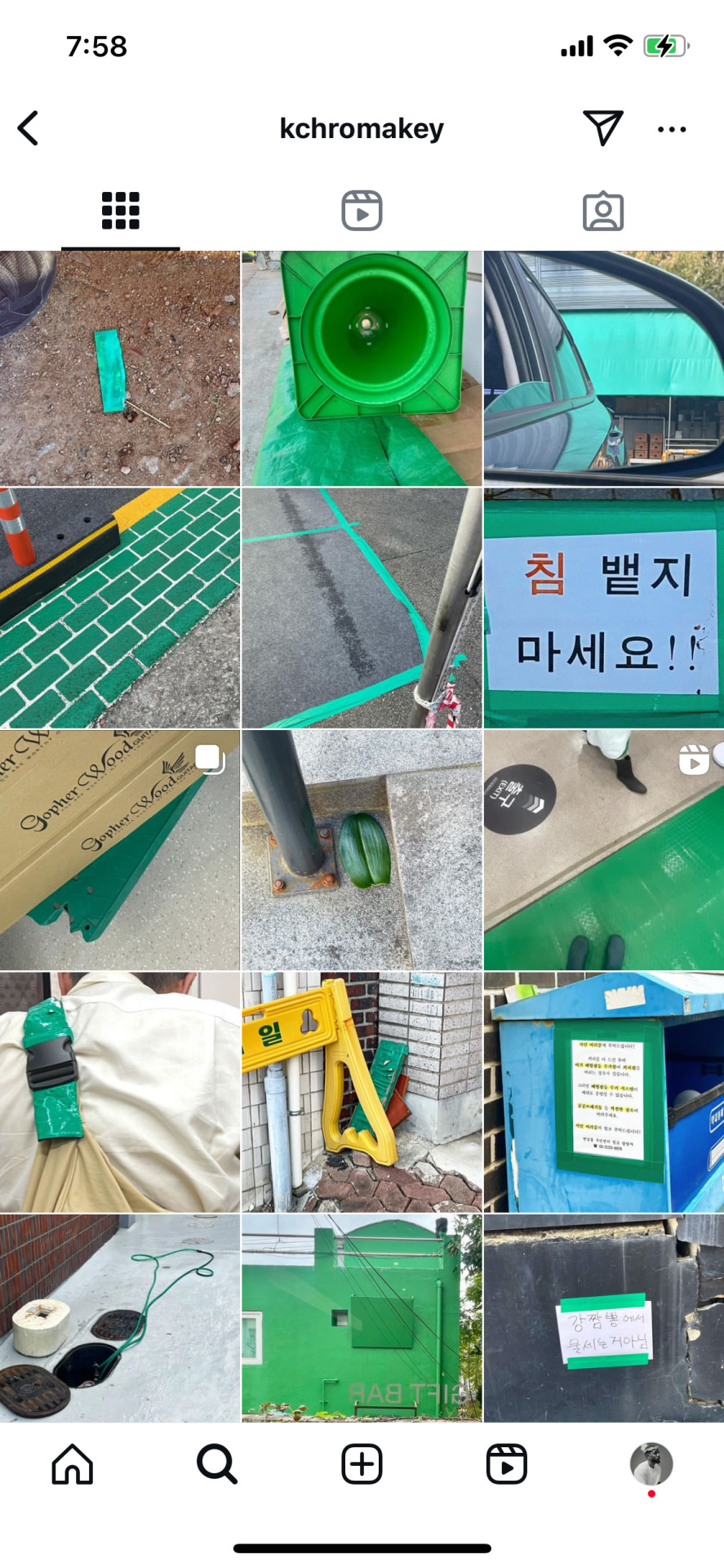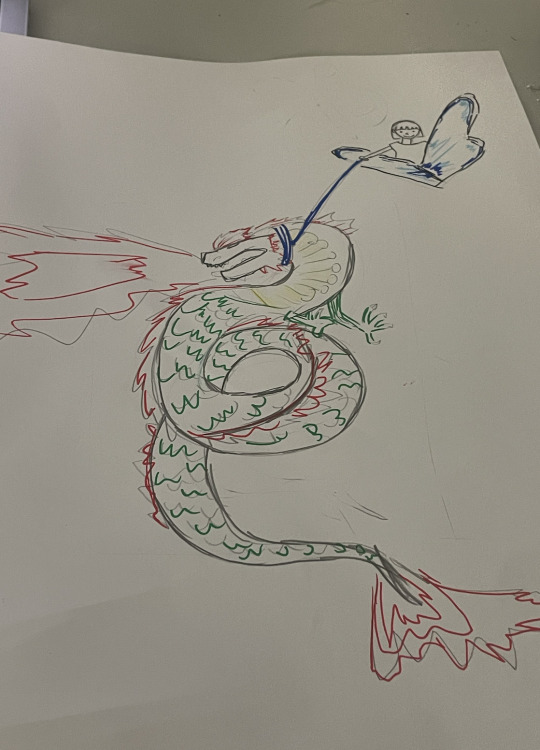Don't wanna be here? Send us removal request.
Text
CTS B Compulsory Question 2
My strength as a designer lies in my ability to see things from a different perspective. I have a broader sight that allows me to approach the same things with unique insight. I can approach more innovative and new ideas because I am interested in things that ordinary people are not interested in and think deeply about. I think it is my special ability to try a differentiated approach through this point of view and to present creative solutions without being bound by the existing framework.
In five years, I hope to establish a magazine agency that embodies these kinds of ideas and perspectives. I envision myself as a visionary leader who drives change by promoting diverse perspectives and continuously introducing new experiences to audiences.
It is not just to provide information, but to be inspired by things that people have not yet noticed or elements that were considered ordinary. For example, I aim to convey meaningful messages through overlooked objects, like street drains or cigarette butts, helping audiences find inspiration in the small aspects of daily life. I also plan to interview people with similar visions, capturing their stories and presenting diverse viewpoints to my audience.
To achieve these goals, I will be committed to gaining practical experience through ongoing zine projects. I will continue updating and improving my portfolio, working at a magazine company where I can collaborate with industry professionals and grow. Additionally, I plan to seek an internship next year to expand my practical experience, and further develop my design skills and insights.
One of the design interests that has influenced me is an Instagram account by a photographer who takes pictures of greens in Korea and posts them on Instagram. I find it very interesting how he photographs objects that are often ignored or taken for granted and posts them with a creative perspective. This work does more than simply post-green objects; it delicately captures Korean culture, lifestyle habits, and aesthetic aspects. These might include something as simple as a piece of tape or a traditional Korean pattern. By re-creating these everyday elements into art, the photographer effectively introduces Korea to the world, and this approach has been a major source of inspiration for me.



Reflecting on the Week 3 topic, “Connecting Society and Design,” a key social issue I find important is short-form media addiction. The issue is particularly severe among children and adolescents, as short-form content can harm their concentration and lead to additional issues like obesity, anxiety, and ADHD. As a designer, I believe one way to address this problem is through a campaign that raises awareness of the risks of short-form media addiction. I am confident that creating posters or videos that highlight the dangers of short-form addiction could help reduce its prevalence and make a meaningful contribution to society.
(469 words)
“Artistic Vision Statement.” Market Your Art, 30 Apr. 2023, marketyourart.net/artistic-vision-statement/#:~:text=An%20artistic%20vision%20statement%20is,framework%20for%20their%20artistic%20choices.
Team, Format. “10 Powerful Artist Statement Examples & Expert Tips.” FORMAT, 10 July 2023, www.format.com/magazine/resources/art/powerful-artist-statement-examples-expert-tips.
“Artistic Vision Statement.” Market Your Art, 30 Apr. 2023, marketyourart.net/artistic-vision-statement/#:~:text=An%20artistic%20vision%20statement%20is,framework%20for%20their%20artistic%20choices.
#vision#statement#society#critical thinking skills#perspective#reflect#value#creativity#insight#designer
0 notes
Text
CTS B Compulsory Question 1
Our group's CTS B manifesto’s nine core values are openness, empathy, self-awareness, adaptability, collaboration, innovation, strategy, critical thinking, and attentiveness. These principles help us grow into thoughtful and versatile individuals.
Openness encourages the explore new design styles without limitations, embracing creativity and expanding the boundaries of the work.
Empathy allows understand others’ perspectives, enabling design with compassion and insight.
Self-awareness emphasizes recognizing identity as designers and fostering originality in creative output.
Adaptability teaches adjust our approach to different situations, a vital skill in the ever-evolving design field.
Collaboration develops teamwork skills, helping work effectively with others.
Innovation challenges to break conventions and seek fresh ideas.
Strategy values purposeful design, ensuring that our work aligns with greater objectives.
Critical thinking equips the ability to solve problems from multiple perspectives and approach solutions with an open mind.
Attentiveness helps to focus on the smallest details and ensure our designs are comprehensive.
While I mostly agree with our group’s manifesto, my personal manifesto would add "curiosity". Curiosity drives continuously asking "why," challenging exploring new things and it leads to discovering unexpected insights in design. It contributes to creating innovative and original outcomes from the early stages of design through to problem-solving. In the fast-evolving world of design trends and technology, curiosity motivates designers to embrace newness and continue growing. In this way, curiosity expands the boundaries of design and builds the ability to approach complex problems in fresh, unique ways.

In Materiality class, I initially struggled with choosing a theme for the cube. However, I tried to find some ideas and I recalled a social identity illustration from the CTS activity. The drawing showed me riding a butterfly and a control dragon, symbolizing my desire as a designer to express myself freely and creatively. With its scales and patterns, the dragon represented my wish to explore and express diverse experiences. Based on this idea, I chose waves from nature to represent my identity, as waves vary in height and depth, interacting with elements like wind and birds. This symbolism aligned with my illustration's meaning, helping me establish "waves" as the theme for my cube project. Critical thinking is one of the important things that has been essential in expanding the designer's approach through creative writing. This process allowed me to discover previously unexplored aspects of my creativity and ideas. When faced with creative limitations, its emphasis on critical thinking helped me find new solutions and added depth to my design approach.

In conclusion, CTS B has combined creativity and strategic thinking, equipping me to solve problems with a broader perspective. It has been a valuable experience, contributing to my growth both as a designer and as an individual.
(448 words)
“Design Manifestos .Org.” Design Manifestos .Org, designmanifestos.org/. Accessed 15 Nov. 2024.
“Writing a Design Manifesto.” Design for Mindfulness, 18 Apr. 2024, designformindfulness.blog/writing-design-manifesto/.
0 notes
Text
WEEK 4 + 5 Field Trip + Analyse Artistic Traditions and Lineages


Iskandar Jalil is a renowned Singaporean ceramicist who was awarded the Cultural Medallion for Visual Arts in 1988. His Jawi script vessel developed during the Hindu-Buddhist era, and Jawi script, which emerged in the 14th century, is based on Arabic script and incorporates a mixture of Malay and Arabic vocabularies. The use of Jawi, a type of Arabic script for writing the Malay language, has declined in practical use in Malaysia and Singapore. In Malaysia, it is still taught in some schools, particularly in Islamic and traditional institutions. However, in Singapore, while it remains part of some cultural heritage, it is rarely seen in everyday use. The inclusion of the Jawi script on this vessel seems to be a way to preserve and remember the script.



Chua Mia Tee's National Language Class was painted in 1959 and reflects the social realist style for which Chua, a Chinese-born Singaporean artist, is known. His works capture the social and political conditions of Singapore and Malay in the 1950s and 60s. This particular painting, created during his time as a member of the Equator Art Society, is filled with nationalist sentiments, commemorating Singapore’s long-awaited attainment of self-governance in 1959. The phrases on the chalkboard, “What is your name?” and “Where do you live?” reflect the growing consciousness of national identity among the people of Singapore at the time.
The painting employs a textured, impressionistic technique, with bold brushstrokes that convey movement and depth. While the overall color palette is subdued, the artist highlights certain features like the figures' clothing and faces with brighter colors. The brushwork is dynamic and loose, allowing the figures and background to blend slightly, creating a natural flow.
(277 words)
“Is the Jawi (Malay Arabic) Script Practically Extinct in Malaysia and Singapore?” Quora, www.quora.com/Is-the-Jawi-Malay-Arabic-script-practically-extinct-in-Malaysia-and-Singapore. Accessed 24 Sept. 2024.
“Jawi Script.” Wikipedia, Wikimedia Foundation, 3 Sept. 2024, en.wikipedia.org/wiki/Jawi_script.
“Chua Mia Tee.” Wikipedia, Wikimedia Foundation, 31 July 2024, en.wikipedia.org/wiki/Chua_Mia_Tee.
0 notes
Text
WEEK2 Connecting Theory and Practice
In the first activity, we worked on "Identity College." The goal was to find five keywords and pictures that best represent our identity. I chose things that I love and that express my identity well. I selected a dragon and a butterfly, as they are my favorites. I also chose hip-hop, since I enjoy listening to hip-hop music and wearing hip-hop-style clothes. I picked a star because I like its beautiful star among the dark sky, and I added the Christian cross, as it is a significant part of my identity.


The second activity involved drawing a self-portrait that represented my identity as a designer. I illustrated myself riding a butterfly and controlling a dragon. This image captures my desire to freely express my thoughts as a designer and to generate new ideas from diverse perspectives.

The difference between Social ID and Personal ID lies in how I see and feel about myself versus how society perceives me. I feel more honest and free when I view myself rather than when I consider how society sees me. Referring to the images above, society often requires a reason for what I like, but when I talk to myself, I don’t need a reason. This allows me to think more freely about my ideas.
Moreover, social identity groups individuals with similar characteristics together, leading to comparisons between individuals, while personal identity distinguishes us as unique individuals. Therefore, it is crucial to differentiate and accurately define Social ID and Personal ID.
(248 words)
“The Difference between Social Identity and Self Identity: Servants University: Training Servants for Christ.” Servants University | Training Servants for Christ |, 31 Aug. 2017, www.servantsuniversity.com/the-difference-between-social-identity-and-self-identity/.
0 notes
Text
WEEK 1 Creative Practice and Critical Thinking
Creative thinking involves generating new ideas, while critical thinking is more about judging. The biggest difference between the two types of thinking lies in "creating" versus "judging." Creative thinking produces ideas, whereas critical thinking makes judgments. Creative thinking helps us view problems and situations from new perspectives. On the other hand, critical thinking is our ability to consider presented information clearly and logically. So, which type of thinking should we strive for more? Combining both types of thinking allows us to have abundant thoughts.
We engaged in class activities that involved critically writing about current social issues. I wrote about the addiction to short videos. With the continuous development of social media, short video platforms are being consumed actively. These platforms, with their characteristic of providing a lot of information in just 10-20 seconds. Continuous exposure to strong stimuli from short video platforms can lead to addiction. This is particularly detrimental to young children exposed to such stimuli from an early age. In fact, in recent years, some health issues have steadily increased. Physically, childhood obesity has risen, and there has also been a rise in anxious children, as well as a steady increase in Attention Deficit Hyperactivity Disorder (ADHD).

How can we tackle this addiction problem? We can approach it with creative thinking. We could encourage physical activities other than social media, like soccer or basketball. Additionally, we might promote positive influences on frequently used social media platforms or create teen-specific social media that blocks negative things and short videos in advance.
By critically analyzing the problem and using what we’ve discovered as a foundation, we can approach it from a new perspective and develop creative ideas. Thus, critical thinking and creative thinking can positively influence each other. When we effectively combine both types of thinking, we can achieve a great synergy.
(303 words)
“Critical and Creative Thinking: Newsletter – October 2021.” Foundation For Excellence, 18 Dec. 2021, ffe.org/critical-and-creative-thinking-newsletter-october-2021/#:~:text=Critical%20thinking%20is%20the%20ability,%2C%20novel%2C%20or%20useful%20ideas.
0 notes